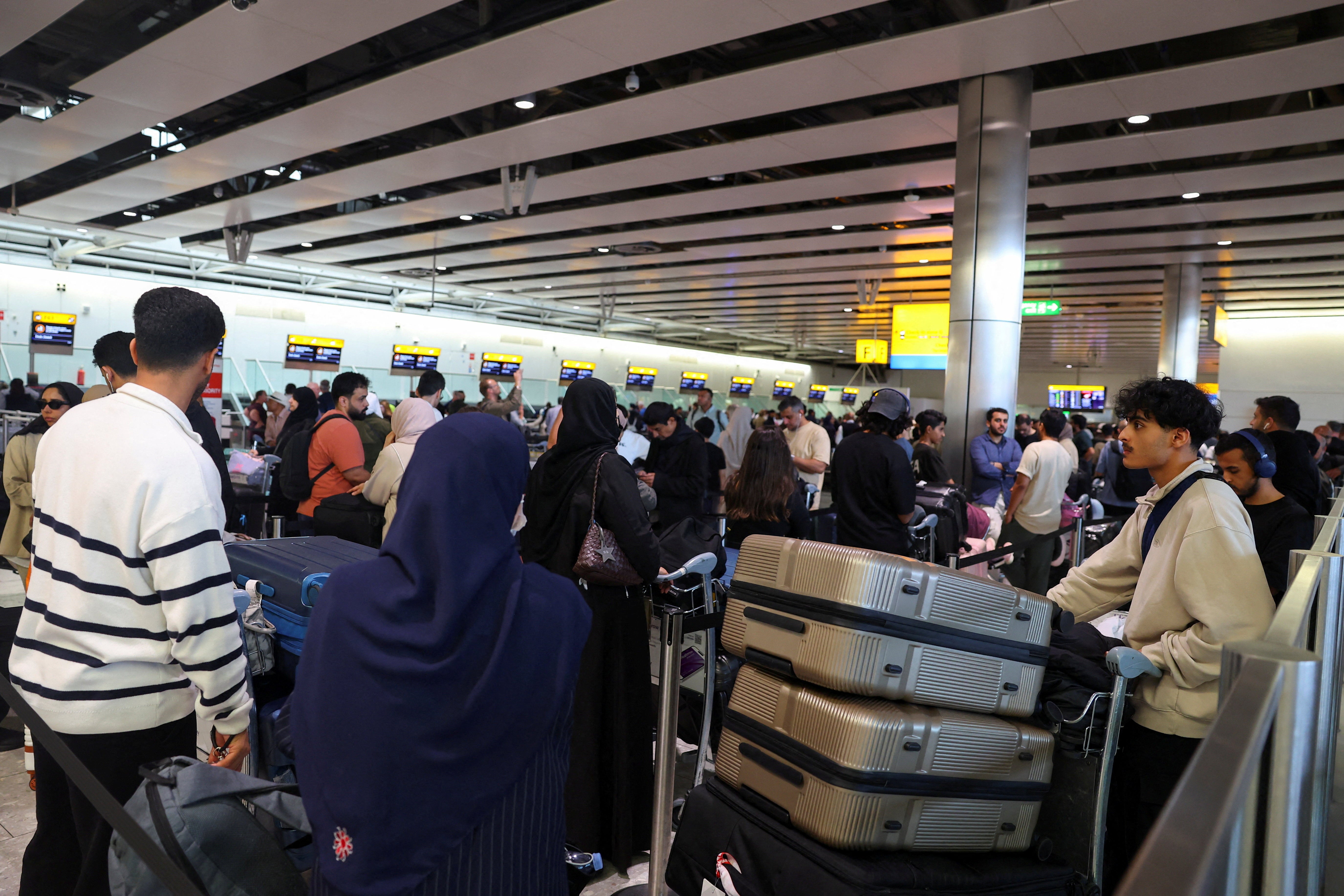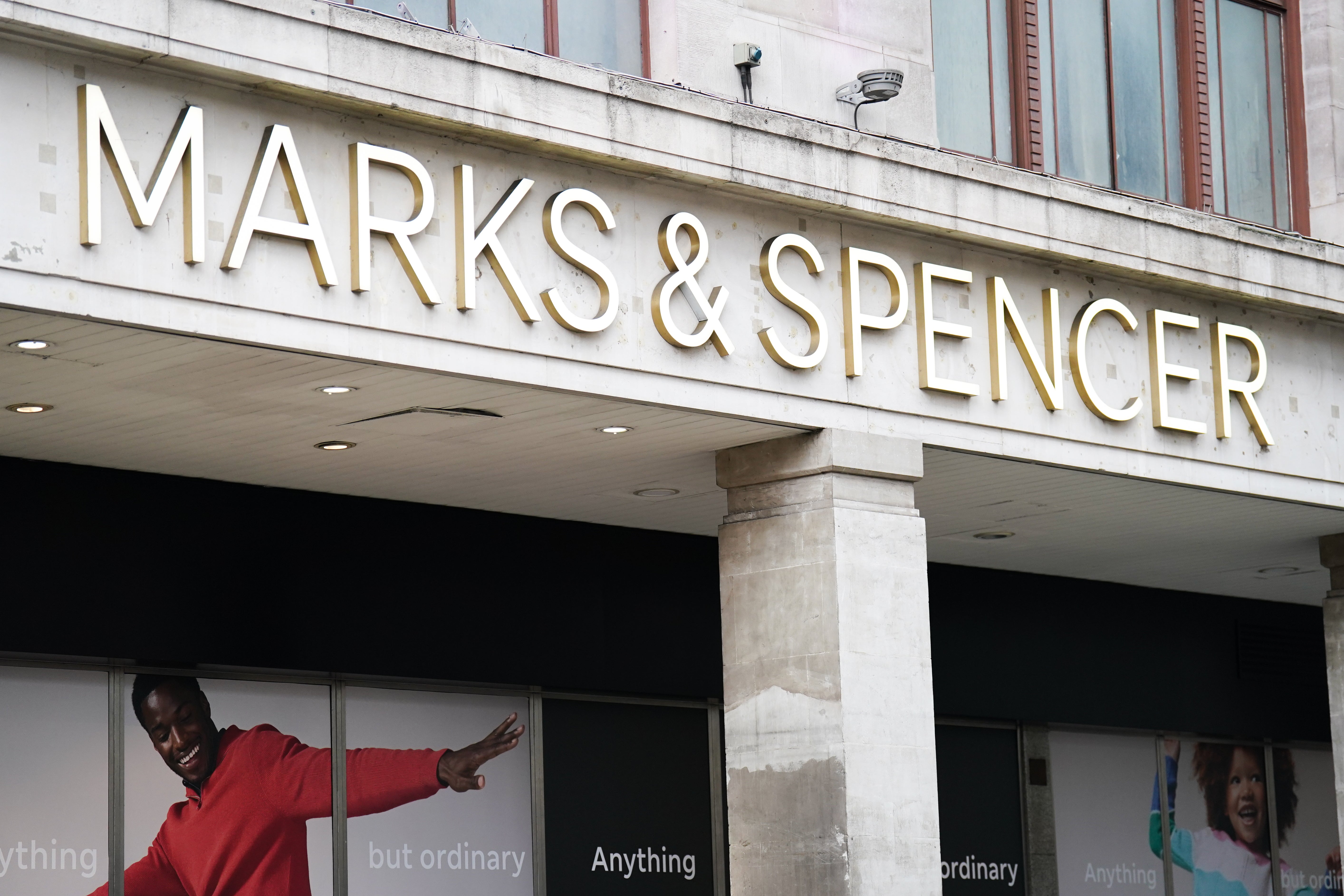

SCIENCE
I’m a White Hat Hacker: Discover the One Tell That Reveals How Close We Are to a Major Cyber Attack!
Published
1 month agoon
By
OBS
Last weekend, millions of travellers faced a modern nightmare: delays, cancellations, and chaos at some of Europe’s busiest airports – Heathrow, Brussels, Berlin – triggered by a ransomware attack on Collins Aerospace’s check-in and boarding software. It’s very much the reality of today’s hyperconnected infrastructure.
Barely days after the hit at the airports, the full catastrophic fallout from Jaguar Land Rover’s cyber attack at the end of August was becoming clear. The company, owned by India’s Tata Motors, has three factories in Britain which produce about 1,000 cars a day. Following the attack, it is reporting losses of at least £50m a week, with many of its 33,000 staff now being told to stay at home, with further cascading effect down the supply chain, affecting jobs across the West Midlands.
As the government considers a financial lifeline to the carmaker, it all shows how fragile the entire supply chain really is. When a single breach triggers waves of shutdowns across dozens of suppliers (many of them small outfits barely holding on), you see the real cyber ripple effect and why calls for a furlough-style safety net might be a vital strategy to buy time for businesses to patch their digital fences and stop this from snowballing again.
The Jaguar Land Rover cyberattack shows just how costly these hacks can be – not just for big companies but for people too. Every year, UK shoppers lose hundreds of millions to online fraud like scams and identity theft. In the 2023/24 financial year, UK consumers reported 68,082 cases of online shopping fraud, which resulted in losses exceeding £56m. The cyberattack in April cost Co-op about £206m in lost revenue in the first half of 2025, with it reporting that its operating profit was hit by around £80m in that period and an expected full-year profit hit to be around £120m. M&S estimates its cyberattack this Easter will also cost about £300m.
The attack disrupted online shopping, caused stock shortages, cancellations, and every year, thousands of UK shoppers lose hundreds of millions to online fraud such as scams and identity theft. Add to this the increase in prices as retailers factor in these hits to their bottom line, and you can see how this becomes all of our problem. But it doesn’t stop there.
As a white hat hacker – also known as an ethical hacker – I am a cybersecurity professional who uses my skills legally to identify security vulnerabilities in computer systems, software, hardware, or networks. I test and improve security by finding weaknesses before malicious hackers can exploit them, and help organisations strengthen their cybersecurity defences. What I see every day is more than alarming.
When these kinds of cyberattacks happen, they often leak employee or partner data, putting people at risk of identity theft or phishing scams afterwards. So the effects touch everyday life – from the money lost in fraud to job worries and broken supply chains, to what is available to buy and how much it costs. This makes it clear at a basic level why strong cybersecurity matters to everyone.

The average cyberattack costs UK companies tens of thousands to millions of pounds, including direct financial loss, operational downtime, reputational damage, and recovery expenses. In total, cybercrime costs the UK economy approximately £27bn annually, which reflects both direct losses and wider economic disruption. This impacts on our productivity, growth strategy supply chain reliability, and government resources allocated to incident response and recovery efforts.
In terms of frequency, cyberattacks are happening more and more, and to hundreds of thousands of UK businesses and organisations every year. In the last 12 months, about 612,000 businesses and 61,000 charities reported cyber incidents, with millions of attacks ranging from phishing scams to ransomware. This shows the UK faces a huge and growing number of cyber threats constantly.
Of course, the biggest (and most feared) danger is if these attacks hit critical infrastructure like energy, transport, healthcare, or finance. These sectors keep the country running and serve millions of people daily. A serious breach there would lead to blackouts, transport chaos, medical device failures, or financial system breakdowns – effects that go far beyond money lost to affecting public safety and national security.
This will be at the forefront of minds in government and boardrooms right now. How resilient are our systems – protecting them is now vital to prevent widespread disruption and maintain everyday life.

If recent events have shown anything, it is how hidden cyber risks can be and how unprepared many important systems actually are. They show how vulnerable supply chains can put businesses in trouble. Collins Aerospace, which was attacked at the weekend, isn’t an airport or airline, but a software vendor – a third-party provider whose systems connect together vast and complex air travel operations.
This sort of third-party risk is increasingly now a target for ransomware gangs. A flaw in one single vendor’s software can cascade through the global transportation ecosystem, unleashing catastrophic disruption across an entire continent.
The lesson here is that just making computers and firewalls stronger isn’t enough. Real protection means keeping a close eye on every part of your supply chain. Are vendors’ security practices robust? Do contracts demand transparent vulnerability disclosure? Is patch management swift and audited? Those questions are foundational.
Then there’s the often-overlooked fallback mode: manual operations. The aerospace hack blew up the digital convenience airports pride themselves on: automated check-ins, seamless boarding. The reversion to handwritten boarding passes and paper manifests was crude but necessary. Investing in these manual backups and making sure staff are trained to execute them under pressure is now as essential as any other security measure. In the race to digitise, this old-school readiness often gets pushed aside, until it becomes a lifeline.

Experts are trying to find out who’s responsible. Terror law watchdog Jonathan Hall KC says it’s possible state-sponsored hackers could be behind the attack. Places like Heathrow in the UK are quite obvious targets during big political and economic tensions. Figuring out who’s behind attacks like this is always tough, but it shows that important systems like airports are now key targets in global cyber battles.
This incident shows that being ready for cyberattacks isn’t just about building stronger defences. It means taking care of the entire system – making sure every part, including suppliers, is secure, planning for the worst, and having backup plans that keep important services running no matter what.
We may be racing toward a more automated dawn, but we have to keep in mind that the digital runway isn’t invincible, and resilience must be built in from the ground up. Our future will depend on it.
Mantas Sabeckis is a security researcher at Cybernews, specialising in identifying data leaks, detecting vulnerabilities, and enhancing the security of AI systems.
You may like
-


Is Tinubu Turning Nigeria into a One-Party State? ADC Reveals Concerns!
-
Unbelievable Surge: NGX Market Value Skyrockets to N93.8tn! Discover What’s Driving This Uptrend!
-


Thousands of Civil Servant Passwords Exposed: Experts Warn of Major Security Threat!
-


Study Reveals Mounjaro and Ozempic Demand Causing NHS Waiting List Delays!
-


Shocking Revelations: Jonathan’s Fierce Attack on Successor for Neglected Bayelsa Projects!
-


Discover How the New Apple Watch Measures Your Heart Rate with Amazing Accuracy!
SCIENCE
Thousands of Civil Servant Passwords Exposed: Experts Warn of Major Security Threat!
Published
2 weeks agoon
October 16, 2025By
OBS
More than 3,000 passwords belonging to civil servants have been exposed online since the beginning of 2024, according to new research, as experts warn it could pose a “serious risk” to national security.
A report by NordPass, using the threat exposure management platform NordStellar, found 3,014 passwords belonging to British civil servants have been leaked in the deep web – which encompasses parts of the internet that are not typically indexed by search engines– and the dark web, a small, encrypted part of the deep web that requires specific software to access and is often associated with cybercrime.
Four local authorities were named in the report as having passwords exposed online: Aberdeen City Council had 538 in total, while Lancashire County Council had 38, Newham Council had 73 and Southwark Council had 42 leaked on the dark and deep web.
It comes after The Independent revealed that hundreds of passwords and email addresses linked to UK government institutions were posted on the dark web in the last year, highlighting a major threat to UK cyber and national security. Among the most affected government departments are the Ministry of Justice with 195 exposed passwords, the Ministry of Defence (111), and Department of Work and Pensions (122).
A cyber security expert warned that the exposed sensitive data of civil servants was particularly dangerous as it could pose serious risks to the UK’s strategic interests.
Karolis Arbačiauskas, head of product at NordPass, said: “Exposure of sensitive data, including passwords, of civil servants is particularly dangerous. Compromised passwords can affect not only organisations and their employees but also large numbers of citizens. Moreover, such incidents may also pose serious risks to a country’s strategic interests.”

The report added that while the “vast majority of passwords exposed were those of employees working in regional level institutions,” the number of leaked passwords did not necessarily reflect the strength of an organisation’s internal security.
“These figures are often influenced by external factors,” said Mr Arbačiauskas. “Larger organisations, with more employees, naturally have a bigger digital footprint, which statistically increases the likelihood of credentials being exposed in a breach. In many cases, a single malware infection on an employee’s personal device or the compromise of a popular third-party website can expose dozens of accounts. Furthermore, the majority of leaks originate from external sites where employees registered using their work email addresses.”
He encouraged the practice of setting up an organisation-wide password policy, never reusing passwords, and using multi-factor authentication.
“If these passwords were not changed after their appearance on the dark web and multi-factor authentication (MFA) is not enabled, attackers could potentially access the email accounts and other sensitive information of these civil servants,” he said. “Moreover, we found hundreds of thousands of email addresses with other exposed data like names, last names, phone numbers, autofills, and cookies. This data can be exploited for phishing attacks and pose significant risks.”
It comes as the National Cyber Security Centre (NCSC) said on Tuesday that a “significant threat” posed by Chinese and Russian hackers had contributed to a record number of serious online attacks. A number of UK businesses, such as M&S, Jaguar Land Rover and Co-op have been hit by cyber attacks this year, crippling their operations and costing the firms billions.
In the year to the end of August, NCSC provided support in 429 cases, of which 204 were deemed “nationally significant incidents” – an increase from 89 in the previous 12 months. Of those, 18 were categorised as “highly significant”, meaning they had a serious impact on government, essential services, the economy or a large proportion of the UK population.
A spokesperson for Newham Council said: “It is an unfortunate reality that organisations like Newham Council will always be a target for criminals. Newham Council takes cybersecurity extremely seriously and have a number of robust measures in place to reduce risk. We regularly provide training and guidance to our staff making them aware of the risks and effective technical controls to reduce specific cyber risks. We do not comment on specific details of our cyber security controls and policies.”
An Aberdeen City Council spokesperson said: “Aberdeen City Council regularly reviews lists of compromised credentials via the National Cyber Security Centre and other official sources. These email/ password combinations are typically used to sign up on external sites or services rather than being compromised from the council’s tenant. Regardless of this all impacted account holders are contacted, and their passwords are reset as a matter of course.”
The Independent has approached Lancashire County Council, and Southwark Council for comment.
SCIENCE
AI Robotics Company Secures Funding Boost Thanks to Scottish National Investment Bank!
Published
2 weeks agoon
October 15, 2025By
OBS
An AI robotics company has raised more than £8 million, including funding from the Scottish National Investment Bank, to develop innovative technology.
Launchpad announced it has successfully concluded a Series A funding round, raising a total of 11 million US dollars, the equivalent of £8.2 million.
Launchpad is combining AI and advanced robotics to support critical automation strategies.
Its aim is for its technology to help companies build products faster, smarter, and more affordably.
The round was co-led by Lavrock Ventures and Squadra Ventures with participation from financial investors including the Scottish National Investment Bank, Ericsson Ventures, Lockheed Martin Ventures and Cox Exponential.
This is in addition to the 2.5 million dollars in grant funding previously awarded to Launchpad by Scottish Enterprise.
Last year, it opened a new research and development (R&D) centre in Edinburgh, choosing the city for its access to a skilled workforce and connections to university AI research and expertise.
Adrian Gillespie, chief executive of Scottish Enterprise, said: “With its R&D centre in Edinburgh, Launchpad is able to draw on Scotland’s long-standing academic, technical and entrepreneurial strengths.
“The company has quickly become an influential part of the Scottish innovation community, and we look forward to supporting its next growth phase.”
Anthony Kelly, investment director at the Scottish National Investment Bank, said: “Launchpad is fast becoming a leader in robotics, with its new R&D centre reinforcing Scotland’s reputation for innovation.
“We’re backing a high-calibre team whose cost-efficient solution shows strong potential to scale across multiple industries.”
SCIENCE
Discover How the New Apple Watch Measures Your Heart Rate with Amazing Accuracy!
Published
2 weeks agoon
October 15, 2025By
OBS
When the latest Apple Watch models were unveiled last month, the announcement of longer battery life, a bigger display and satellite connectivity for Apple Watch Ultra 3 were eye-catching. But it was a new health feature that was the real draw: notifications for hypertension, that is, high blood pressure.
Apple has placed health and the heart at the forefront for its Watch for years, with ECG readings and blood oxygen measurements among recent highlights.
Sumbul Desai, Apple’s vice president of health, spoke to The Independent soon after the announcement to explain the new feature and the thinking behind it.
“We’ve been wanting to work on hypertension for many years, to be candid. Hypertension affects more than a billion people worldwide, but less than half those cases are diagnosed. We wanted to raise awareness and to give people more power to avoid some complications that can happen down the line,” says Dr Desai.
But how to measure it? Conventional methods, where a clinician straps a cuff to your arm may not be the best.
“Often, when I used to see people in the clinic, they would come in,” Dr Desai explains, “and they’d be really nervous, so their blood pressure would be elevated, or they just ran from parking their car and, again, it’s elevated. But does that truly reflect what their blood pressure is as they live their everyday life?”
The new feature is not like heart rate, where you can initiate a reading instantly. Here, the feature works in the background by measuring blood pressure over a 30-day period. “We wanted to get a sense of your blood pressure as you’re just living your life,” Desai says.
At the end of that period, if it’s spotted what it thinks are high blood pressure readings, the Watch will notify you and encourage you to log your blood pressure.
Other wearables can measure your blood pressure, such as the Hilo band and Samsung smartwatches. They usually require calibration with a traditional cuff, but that’s not necessary here — again, Apple wants a simple process.
“We think about health as being holistic at Apple, and one of the keys to managing hypertension is exercise. I always say, if I could prescribe anything, it would be movement, because that’s key to so many conditions,” she adds.
While the heart rate monitoring on Apple Watch shows you beats per minute, there are no figures revealed for hypertension. Why is that?
“It was a few things, such as keeping it more simple and friendly. The way our algorithm works is that we did compare it to ground truth with a cuff, but we did it over a period of 30 days. Your blood pressure, one minute, can be higher, then you sit down, and it’s lower,” Desai explains. “So, we decided to not fixate on a number: because of so many variations we were having a lot of outliers. And so it was better to do an aggregate over 30-day periods. The way the algorithm works is it looks at a signal that is indicative of hypertension, but isn’t necessarily measuring the actual number but it correlates with the blood pressure number. We are not measuring systolic and diastolic directly in the traditional sense.
“What we’re measuring is how the blood is flowing and what the response of the blood flow is, to the beats of the heart, and that correlates with blood pressure, which is why we didn’t put an exact number in, for one reason. We wanted to start with how do we get the true sense of what your blood pressure is as you’re living your life without a fixation on the number? And so that was the reason we decided to approach it more from this vantage point given the technology we have.”
Though no number is shown, the algorithm knows what the range is. It compares your individual readings over 30 days and then resets. “We had people take their blood pressure at various points during the day, and that’s how we correlated the signal. We’re looking at the trace pattern of the signal, that correlated with elevated blood pressure,” Dr Desai says.
She also explains that the sensitivity of the analysis is on the low side – Desai says it will detect four out of ten cases – compared to specificity which is very high, about 92 per cent.
“The reason we did that is, for those that get a notification, we wanted to feel confident that they will have a positive result. We didn’t want to create a situation where, if the number was lower, say, we had false positives, and we wanted to make sure there was confidence in the algorithm when someone is using it. So, we made the trade-off of not being able to capture everyone, because if you look at the numbers of hypertension, it’s still significantly a large number. But those that actually get a notification, we feel very confidently it will yield a stage one or stage two diagnosis. If you get notified, you’re more than likely to have a condition.”
The 30-day system means it’ll assess your data for 30 days and if it sees nothing it will reset and start checking again over the next 30 days. “If you do receive a notification, it’s not that the process stops, we still keep checking in the background. I think it has a potential of shortening kind of the time frame that people get diagnosed with hypertension,” Dr Desai hopes.
The assessments take place multiple times a day, though not when you’re on a vigorous run, for instance, because your heart rate would naturally be elevated. There’s no set number of readings, but there’s a minimum across the 30 days for Apple to be confident in the data. Each reading takes just seconds.
The feature has a future, Desai thinks: “We do the appropriate validation testing to get the regulatory approval, because the regulators have to feel like we’re not providing anybody with inaccurate information. But I think this area is ripe to understand more. This is very novel system in the way it does it, and we think we will learn that there may be other signals that this may be also indicative of, but we started with hypertension. And I think that’s what’s so remarkable.”






















